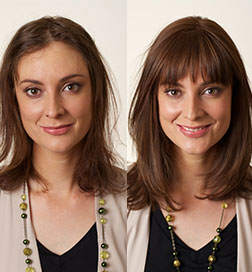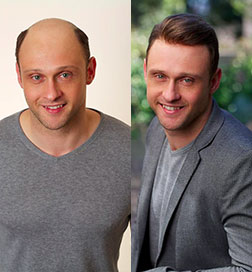Are you losing more hair than you normally would? For men this is a question that comes to mind more often as they near their 30s, and the possibility of male pattern baldness becomes more of a reality. Male pattern baldness is not something most men look forward to, but the fact is half of all men begin to bald by the time they’re 30.
So exactly how do you know to which half you belong? When is it safe to say that you’ll be keeping your hair for life, and when should you start being concerned about male pattern baldness?
What You Need to Know About Hair Loss
Before you start going crazy obsessing over hair loss, there’s one thing you need to remember and it is that experiencing hair loss daily is normal. Everyday, everyone loses around 100 to 125 strands of hair from their heads, which is quite insignificant considering most of us have about 100,000 strands (or more) on our heads.
Hair normally undergoes three stages throughout their life cycle. These are the anagen phase, the catagen phase and the telogen phase. For any normal, healthy person about 80 to 90 per cent of their hair is in anagen phase or growth phase at any given time. About 1 to 2 per cent are in catagen phase, wherein the hair simply stops growing. The last phase, the telogen phase is what around 8 to 9 per cent of your hair go through at any given time. It is at this stage that hairs are at rest as they prepare to detach from your scalp.
When someone experiences having more than 10 per cent of their hair in the telogen phase, this is called telogen effluvium. This is a temporary condition, often caused by stress, surgery, sickness and other factors. Many other things could also affect the amount of hair we lose on a daily basis. Poor nutrition, health condition, hygeine, hair colouring and daily styling could also contribute to hair loss.
So just because you see a clump of hair on your shower drain doesn’t mean you should immediately worry about male pattern hair loss.
So How Much Is Too Much?
Now that you have an idea of how much hair loss is normal, how can you tell if what you’re experiencing is within that norm? You could count all the hairs falling off your scalp, but that would be cumbersome, time consuming and would probably just drive you mad! A more efficient and practical way would be to do the ‘pull test’. Start with a clean and dry head of hair. Run your fingers through a small portion of it, gently tugging at the strands once you get to the ends. Count the number of strands left in your hand after one tug, and if there are more than 3 strands (and especially if there are more than 6) then you may have a hair loss problem. No more than 10 strands should be falling out for every 100 tugged.
When to Consider Hair Loss Treatment
If you are losing a significant amount of hair, it may just be temporary and getting drastic hair loss treatments may be unnecessary. As we’ve mentioned before, you may just be experiencing some stress at the moment or have some nutritional deficiencies, and can recover from the hair loss with proper rest and relaxation, and a healthy diet.
However, if your hair loss is steadily progressing and producing a gradual thinning on top of your head, a receding hairline, patchy or bald spots on your scalp, then you may need to turn to more serious hair loss solutions.
These days there are a number of hair loss treatments for men designed to cater to every type and level of hair loss and balding:
- Hair Loss Concealer – A hair loss concealer is an instant hair thickening solution made up of microscopic natural keratin protein fibres that cling to your hair and make them appear thicker and fuller in seconds. This is a great solution for those who still have most of their hair intact and just want to hide any receding or thinning areas.
-
Laser Hair Retention Therapy – This solution utilises laser technology to stimulate hair regrowth. It is often done in conjunction with stem cell treatment to further produce positive results. Laser hair retention therapy and stem cell serums can be used in the convenience and privacy of your own home. And because it promotes natural hair growth for men it is a great option for those looking to regain natural hair thickness.
-
Non-Surgical Hair Replacements – This includes wigs and toupees, but here at Transitions Hair we have an even better non-surgical hair replacement solution: SensiGraft. SensiGraft bridges the gap between surgical hair transplants and conventional hair replacements. It utilises highly advanced technology to produce a very natural look that cannot be perceived even under close visual inspection or a probing touch. It’s a great choice for those experiencing baldness at the top of their head and want a non-surgical solution that looks and feels incredibly natural.
-
Hair Transplants – This has become a very popular option especially among male celebrities. Hair transplants utilise your own existing hair, transplanting some of these hairs to thinning or balding areas of your scalp. Because it will be your own hair growing naturally, there is no special maintenance required other than your regular hair care routine. However, not everyone is a suitable candidate for this procedure, as you would need a sufficient amount of donor hairs and the right quality of hair in order to get the best results.
To know more about these different hair loss treatments, feel free to give us a call on 1300 427 778. We believe that an important first step in overcoming hair loss is to get access to the right information, and that’s exactly what we strive to offer. Schedule your free consultation with us today.




